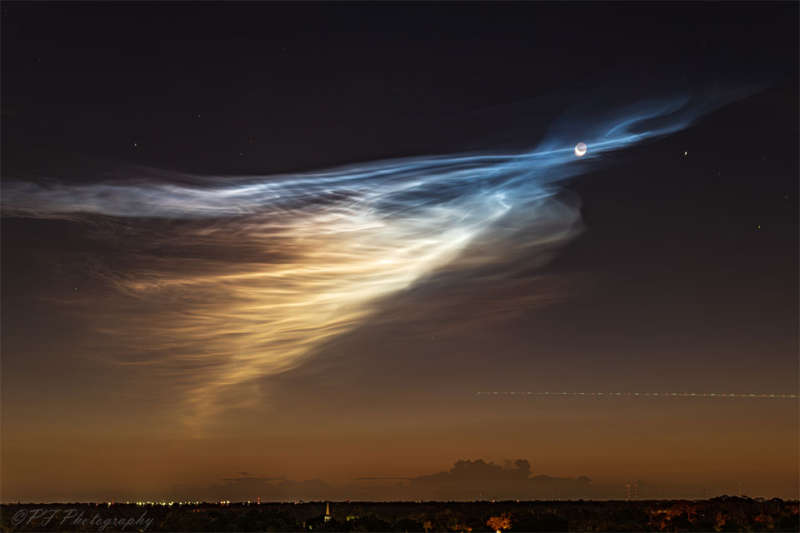
|
Credit & Copyright: Pascal Fouquet
Explanation:
These clouds are doubly unusual.
First, they are rare
noctilucent clouds, meaning that they are
visible at night --
but only just before sunrise or just after sunset.
Second, the source of these
noctilucent clouds is actually known.
In this rare case, the source of the
sunlight-reflecting ice-crystals in the
upper atmosphere can be traced back to the
launch of a nearby SpaceX rocket about 30 minutes earlier.
Known more formally as polar mesospheric clouds,
the vertex of these icy wisps happens to converge just in front of a
rising crescent Moon.
The featured image -- and
accompanying video -- were captured over
Orlando,
Florida,
USA about a week ago.
The bright spot to the right of the Moon is the planet
Jupiter,
while the dotted
lights
above the horizon on the right are from an
airplane.
|
January February March April May June July August September October November December |
| ||||||||||||||||||||||||||||||||||||||||||||||||
NASA Web Site Statements, Warnings, and Disclaimers
NASA Official: Jay Norris. Specific rights apply.
A service of: LHEA at NASA / GSFC
& Michigan Tech. U.
Based on Astronomy Picture
Of the Day
Publications with keywords: noctilucent clouds
Publications with words: noctilucent clouds
See also:
